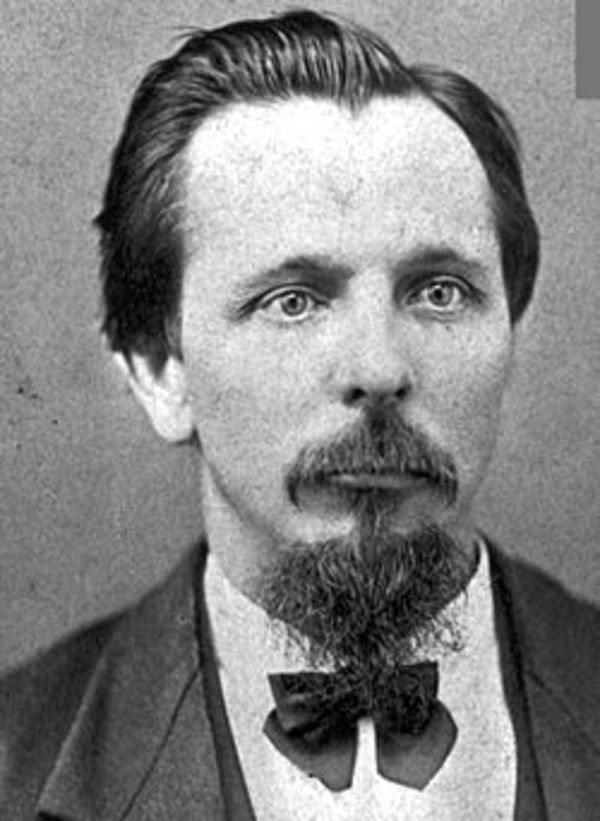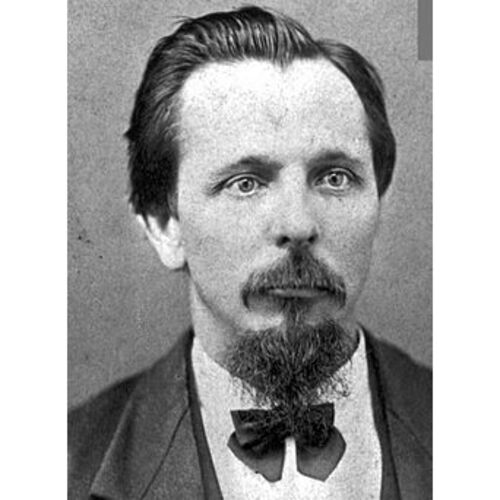
Source: Link
MOODY, SEWELL PRESCOTT, lumberman; b. probably between 1835 and 1840, perhaps in Hartland, Maine, son of Joshua Moody; m. in 1869 Janet McAuslyn Watson by whom he had two children; drowned in the sinking of the steamer Pacific near Cape Flattery, 4 Nov. 1875, while bound for California on a business trip.
Sewell Prescott Moody is said to have crossed the American continent to San Francisco in the traditional covered wagon with his family when he was 14. He came to New Westminster, B.C., about 1861 and in 1862 formed a partnership with Moses Ireland, who had made a small stake in the Cariboo mines. Ireland later stated that his investment was $2,000 and Moody’s, $600. They imported cattle and other supplies and prospered in a modest way. The Moody family had had a long association with the lumber trade in Maine, and in 1862 Moody formed a syndicate that included Ireland, Joshua Attwood Reynolds Homer, and Captain James Van Bramer to build a steam sawmill at New Westminster. This was the first mill of any size on the mainland of British Columbia. Unfortunately the first vessel to load an export shipment stranded on a sandbar in the Fraser River and remained aground for six weeks. As a result other ships refused to load. Members of this syndicate later became interested in coal seams that had been discovered on Coal Harbour and English Bay, in Burrard Inlet. They incorporated the British Columbia Coal Mining Company in 1865, but nothing came of this venture.
Meanwhile Moody had decided to move his lumbering activities to Burrard Inlet. Late in 1863 he tried to purchase the Pioneer Mills, the first industrial plant on the inlet; but was outbid at the auction. A year later he succeeded in buying the mill, which was cutting lumber under his ownership by February 1865. Though greatly handicapped by the lack of marketing information and exchange facilities, Moody slowly built up the first substantial lumber export business from the British Columbia mainland, and sent shipments to California, Hawaii, Peru, China, Australia, New Zealand, and Great Britain.
In 1866 Moody entered into partnership with George Dietz and Hugh Nelson*, who had operated an express business serving the Fraser River mines. For a time the firm continued to be known as S. P. Moody and Company, but in 1870 the name was changed to Moody, Dietz and Nelson. The additional capital had made it possible to expand the mills. The original plant was driven by water-power, and in 1868 a larger steam mill was added. This was burned in December 1873 but was replaced at once by a new mill powered with the engines of hms Sparrowhawk, a gunboat recently retired by the Royal Navy. Moody’s mills then had a cutting capacity of 112,000 feet in 24 hours.
These mills were on the north shore of Burrard Inlet, within the limits of the present city of North Vancouver. First known locally as “Moody’s Mills,” the surrounding settlement was officially named Moodyville in 1872. Moody was an enterprising, astute, and perhaps occasionally sharp trader; but he had a puritanical streak and a liking for law and order. Moodyville was a company town, and he ruled it and his men with a firm hand. The sale of liquor was forbidden, and in large part owing to Moody himself Moodyville had the first school, the first religious service, the first library and reading room, and the first Masonic lodge on Burrard Inlet. He also extended the telegraph line from New Westminster at his own expense. Sewell P. Moody thus built a community as well as an important pioneer industrial enterprise.
Daily Colonist (Victoria), 12, 13 Sept. 1901. W. A. Carrothers, “Forest industries of British Columbia,” in A. R. M. Lower, The North American assault on the Canadian forest: a history of the lumber trade between Canada and the United States (The Carnegie Endowment for International Peace, Division of economics and history, Toronto, New Haven, Conn., London, 1938). J. S. Matthews, “Early Vancouver: narrative of pioneers” (unpublished typescript, 7v., 1932–56, IV, VI, copies in City Archives, Vancouver, and Library of Parliament, Ottawa). R. L. Reid, Grand Lodge of British Columbia A.F. & A.M.: historical notes and biographical sketches, 1848–1935 (Vancouver, n.d.). F. W. Howay, “Early shipping in Burrard Inlet, 1863–1870,” BCHQ, I (1937), 1–20.
Cite This Article
W. Kaye Lamb, “MOODY, SEWELL PRESCOTT,” in Dictionary of Canadian Biography, vol. 10, University of Toronto/Université Laval, 2003–, accessed March 29, 2025, https://www.biographi.ca/en/bio/moody_sewell_prescott_10E.html.
The citation above shows the format for footnotes and endnotes according to the Chicago manual of style (16th edition). Information to be used in other citation formats:
| Permalink: | https://www.biographi.ca/en/bio/moody_sewell_prescott_10E.html |
| Author of Article: | W. Kaye Lamb |
| Title of Article: | MOODY, SEWELL PRESCOTT |
| Publication Name: | Dictionary of Canadian Biography, vol. 10 |
| Publisher: | University of Toronto/Université Laval |
| Year of revision: | 1972 |
| Access Date: | March 29, 2025 |



